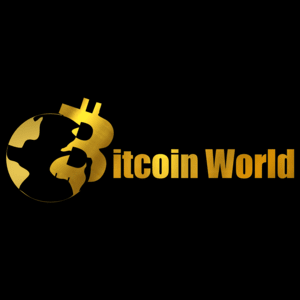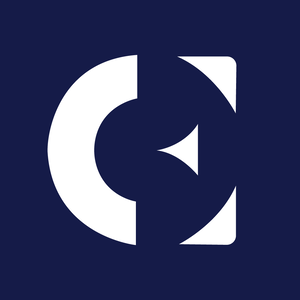Exciting Future: Paolo Ardoino to Unveil Tether AI Vision at Milan AI Week
8 min read
Get ready for a potentially significant moment at the intersection of cryptocurrency and artificial intelligence! The crypto world is buzzing following an announcement from Tether CEO Paolo Ardoino, hinting at major revelations regarding the company’s foray into the AI space. This move by the issuer of the world’s largest stablecoin, USDT, signals a growing trend of crypto giants exploring technological frontiers beyond traditional finance. What Did Paolo Ardoino Announce About Tether AI? Via a post on the social media platform X, Paolo Ardoino, the chief executive of Tether, revealed that the crypto community would soon receive comprehensive details about an ambitious new project: Tether AI . According to Ardoino, the specific goals, objectives, and foundational principles of this open-source AI platform are slated for public announcement at a prominent industry event. The chosen venue for this anticipated unveiling is none other than Milan AI Week . The date to mark on your calendars is May 14th . This specific timing and location suggest a strategic effort by Tether to position its AI initiative within a dedicated technology and innovation spotlight, attracting attention from both the AI and blockchain sectors. The fact that Tether, a company primarily known for its stablecoin operations which underpin a vast portion of the crypto market, is stepping into the complex and rapidly evolving field of artificial intelligence is noteworthy. It suggests a strategic diversification and a potential leveraging of its significant resources and influence to contribute to or integrate with cutting-edge technology. Why is Tether Venturing into Artificial Intelligence? Tether’s primary business revolves around issuing and managing the USDT stablecoin, maintaining its peg to the US dollar. So, why the pivot, or rather, the expansion into AI? While specific details about Tether AI are scarce ahead of the Milan AI Week announcement, we can speculate on several compelling reasons why a company like Tether would explore artificial intelligence: Operational Efficiency and Security: AI can be instrumental in enhancing internal operations. This could include sophisticated transaction monitoring to detect illicit activities, improving risk assessment for reserves, automating customer support, or optimizing infrastructure management. Given Tether’s scale, even marginal improvements in efficiency can translate into significant savings and enhanced security. Product Diversification: The crypto market is dynamic. While stablecoins are crucial, exploring new technological avenues like AI allows Tether to potentially develop new products or services that leverage its existing infrastructure and user base. This could range from AI-powered financial tools built on blockchain to contributing to the broader AI ecosystem. Leveraging Resources and Influence: Tether is a highly profitable entity with substantial resources. Investing in AI allows them to deploy capital into cutting-edge research and development, potentially becoming a leader in the intersection of blockchain and AI. Their market position gives them a unique platform to launch and promote such initiatives. Contributing to the Open-Source Ecosystem: Paolo Ardoino specifically mentioned Tether AI as an “open-source AI platform.” This suggests an intention to contribute to the public good in the AI space, fostering collaboration and innovation. Open-source projects can attract talent and accelerate development through community contributions. Staying Ahead of the Curve: Both AI and blockchain are considered foundational technologies of the future. By actively engaging in AI development, Tether positions itself at the forefront of technological convergence, potentially unlocking synergies that are not yet apparent. This strategic move indicates that Tether views AI not just as a complementary technology but potentially as a core area for future growth and innovation. What Does an Open-Source AI Platform Entail? The description of Tether AI as an “open-source AI platform” is particularly interesting. Open source means that the source code and underlying architecture of the platform will likely be made publicly available. This contrasts with proprietary AI systems where the inner workings are kept secret. Benefits of an open-source approach in AI include: Transparency: Allows the community to inspect the code, identify bugs, and understand how the AI works, fostering trust. Collaboration: Enables developers worldwide to contribute to the project, suggest improvements, and build applications on top of the platform. Innovation: Accelerates the pace of development as multiple parties can work on different aspects simultaneously. Accessibility: Makes powerful AI tools and frameworks available to a wider audience, lowering the barrier to entry for developers and researchers. Security: More eyes on the code can help identify and fix vulnerabilities faster than in closed systems. For Tether AI , an open-source model could mean they are building foundational AI models, tools, or frameworks specifically designed for use within the blockchain and cryptocurrency ecosystem, or perhaps even general-purpose AI tools that they believe should be openly accessible. Connecting Cryptocurrency and AI: The Broader Landscape Tether’s move into AI is not happening in a vacuum. The convergence of Cryptocurrency AI and Blockchain AI is a rapidly developing field. Numerous projects and researchers are exploring how these two technologies can interact and enhance each other. Here are a few areas where this synergy is being explored: AI for Blockchain Security: AI algorithms can analyze blockchain data patterns to detect anomalies, identify potential fraud, or predict network congestion. Blockchain for AI Data Management: Blockchain can provide a secure, transparent, and immutable ledger for storing datasets used to train AI models, ensuring data integrity and provenance. Decentralized AI Networks: Projects are exploring decentralized networks where participants can contribute computing power or data for AI training, often incentivized via tokens. AI-Powered Trading and Analytics: AI models are increasingly used to analyze market trends, predict price movements, and automate trading strategies in the crypto markets. AI in DeFi and NFTs: AI could be used to optimize DeFi lending protocols, create dynamic NFT art, or personalize user experiences in decentralized applications. AI for Smart Contract Auditing: AI tools can assist in analyzing smart contract code to identify vulnerabilities and potential bugs. Tether’s initiative could potentially contribute to any of these areas or carve out an entirely new niche. Their focus on an “open-source platform” suggests a foundational layer that others might build upon. Paolo Ardoino’s Vision: Leading Tether into New Frontiers Paolo Ardoino has been a prominent figure in the cryptocurrency space for years, particularly as the face of Tether. His leadership has overseen Tether’s growth into a dominant force in the stablecoin market. His decision to publicly announce the details of Tether AI at a major event like Milan AI Week underscores the seriousness with which the company is approaching this new venture. Ardoino’s public statements often emphasize innovation, security, and the potential of blockchain technology to revolutionize various sectors. His backing of an open-source AI project aligns with a philosophy of collaborative development and transparency, which could be a strategic way to build trust and adoption for their AI initiatives. His presence at Milan AI Week provides a direct platform to communicate Tether’s vision for AI, address potential questions, and engage with both the AI and crypto communities simultaneously. This direct engagement is crucial for a project aiming to be open source and community-driven. Milan AI Week: The Stage for the Big Reveal The choice of Milan AI Week as the venue for the Tether AI announcement is strategic. Milan AI Week is an event focused on artificial intelligence, bringing together researchers, developers, businesses, and enthusiasts from the AI sector. By making the announcement here, Tether ensures that their message reaches a key audience within the AI community, beyond just the typical crypto crowd. This suggests that Tether is serious about integrating with or contributing to the broader AI landscape, not just building an internal tool. Presenting at such an event can help attract AI talent, potential collaborators, and generate interest from companies looking to leverage AI technology. The announcement on May 14th is expected to provide concrete details that will clarify the scope and ambition of Tether AI . Will it be a framework for AI model training? A set of tools for AI integration with blockchain? A specific AI application built by Tether? The crypto and AI worlds will be watching closely. Potential Implications and What to Watch For The launch of Tether AI could have several potential implications: For Tether: It could open new revenue streams, enhance brand perception as an innovator, and improve operational resilience. For USDT: While directly impacting USDT’s stability is unlikely in the short term, successful AI integration could indirectly benefit the ecosystem by improving security or efficiency. For the Crypto Market: An open-source platform could spur innovation in Cryptocurrency AI applications, leading to new dApps, improved security tools, or more sophisticated market analytics. For the AI Market: Tether’s involvement could bring significant resources and attention to specific areas of Blockchain AI , potentially accelerating development. What should readers watch for after the May 14th announcement? Key details will include: The specific technical focus of the open-source platform. How it plans to integrate with or leverage blockchain technology. The initial use cases or applications Tether envisions for the platform. How the open-source community can get involved. Any timelines for development or deployment. Understanding these details will be crucial to assessing the potential impact and success of Tether AI . Challenges and Considerations While the prospect of Tether entering the AI space is exciting, it’s important to consider the challenges: Technical Complexity: Building and maintaining a robust, open-source AI platform is technically challenging, requiring significant expertise and resources. Competition: The AI space is highly competitive, with established tech giants and numerous well-funded startups. Tether will need to differentiate itself. Regulatory Uncertainty: Both cryptocurrency and AI face evolving and often uncertain regulatory landscapes worldwide. Navigating this will be crucial. Ethical Concerns: AI development raises ethical questions around data privacy, bias, and potential misuse. As an open-source project, addressing these concerns transparently will be vital. Adoption: The success of an open-source platform depends heavily on community adoption and contribution. Tether will need to build a strong developer community around Tether AI . Overcoming these hurdles will be key to Tether AI realizing its potential. Conclusion: A Glimpse into Tether’s Future Vision Tether’s announcement about unveiling details of its open-source Tether AI platform at Milan AI Week on May 14th marks a pivotal moment for the company and highlights the increasing convergence of blockchain and artificial intelligence. Under the leadership of Paolo Ardoino , Tether appears set to expand its technological footprint beyond stablecoins, venturing into a field with immense potential for innovation and disruption. While the specifics of the platform remain under wraps, the commitment to an open-source model suggests an ambition to contribute meaningfully to the broader tech ecosystem and foster collaborative development in Cryptocurrency AI and Blockchain AI . The upcoming announcement is highly anticipated and is expected to provide clarity on Tether’s strategic direction in this exciting new domain. Whether Tether AI will focus on enhancing Tether’s core operations, building new decentralized AI applications, or providing foundational tools for the community, its launch signifies a bold step by a major crypto player into the future of technology. The crypto and AI worlds will be eagerly awaiting the details revealed in Milan. To learn more about the latest crypto market trends, explore our article on key developments shaping Blockchain AI institutional adoption.

Source: Bitcoin World



